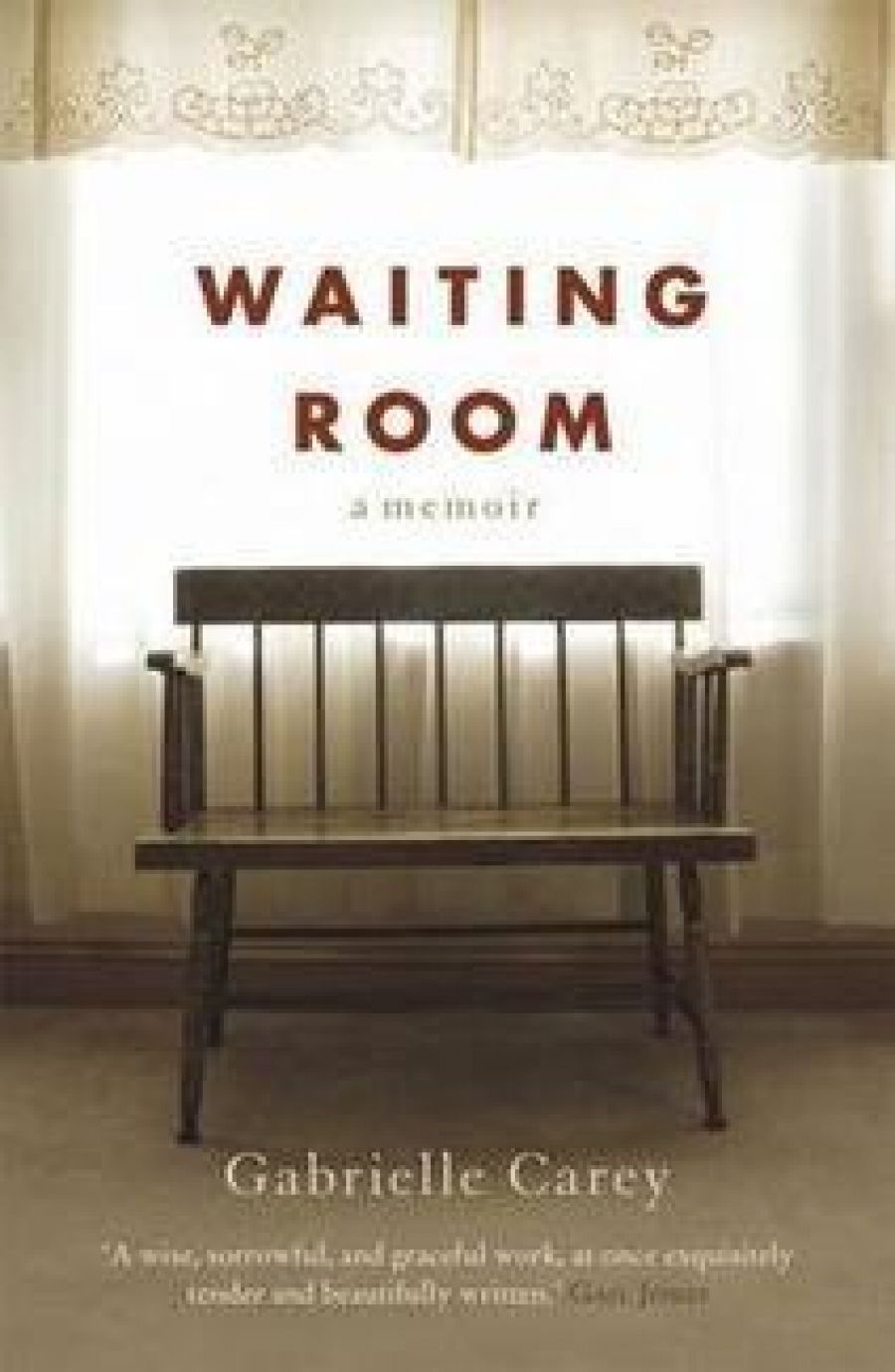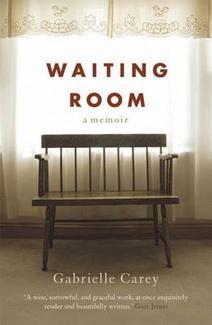
- Free Article: No
- Contents Category: Memoir
- Review Article: Yes
- Article Title: A now so close to us
- Online Only: No
- Custom Highlight Text:
For Gabrielle Carey, the sight of her mother’s bare feet, soles facing, was almost unbearable. Naked and defenceless, she had never seen them from that angle before. Other parts of a loved one’s anatomy could produce such a feeling – the nape of a beloved neck or an innocent elbow – but on this occasion it was the old feet projecting from the elderly and suddenly compromised body, strapped to a trolley, awaiting a CT scan. The daughter ‘didn’t quite know what to do’, which turns out to be a revealing remark. She wonders if she should stroke her arm or not, but before offering any such support she is asked to leave the cubicle.
- Book 1 Title: Waiting Room
- Book 1 Subtitle: A memoir
- Book 1 Biblio: Scribe, $29.95 pb, 214 pp
- Book 1 Cover (800 x 1200):

The scans reveal a brain tumour, benign but requiring urgent removal, and thus begins Carey’s memoir, an uncompromising and unflinching look at herself as well as a moving discovery of her mother, her incomplete family history and life itself. Others have written about unlocking lives. Germaine Greer, in Daddy, We Hardly Knew You (1989), searches for the unknown in her father. By contrast, Peter Godwin’s father, in the wonderful When a Crocodile Eats the Sun (2006), presents his son with his carefully concealed true identity. Carey, during long hours in many waiting rooms, finds a multitude of questions she needs to ask her mother in order to unlock her own story, and realises there may not be enough time.
Her epigraph, from John Fowles’s The French Lieutenant’s Woman (1969), states that the great human illusion about time, comparing its reality with that of a road, is wrong. ‘Time is a room,’ he says, ‘a now so close to us that we regularly fail to see it.’ And what of reality? Carey writes ‘memory doesn’t completely encompass reality: it selects and modifies certain aspects of it’. As a writer, her imaginative reconstructions sometimes land her in trouble. That her memories differ from those of others is surely the case in any shared remembrance. Like an artist’s view, the scene is different from every angle.
Without the fore and aft view on the road, time here is constrained in a waiting room, by experience usually a place of delay. Time meant nothing in the neurosurgeon’s waiting room, but Gabrielle, heeding Katherine Mansfield’s words, tries to keep fear away by remaining calm for her mother. One feels immense sympathy for her as she juggles the deep concerns for her mother with the demands of her children, a beautiful, petulant teenager and a science-mad, questioning little boy. Sympathy for her, yes, but also great feeling for these children, who are not often allowed into their mother’s world. Even memories of her own puberty blues fail to mitigate her desperation.
When most people have enormous responsibilities relating to aged parents, they are often also caring for children undergoing the predicaments and confusions that dog one’s steps through life. Friends tell the author that she deliberately creates her recurring crises, which she denies. There are certainly many whose lives seem magnets for drama, and perhaps she is one of them.
Carey admits to being an insistent questioner. Unable to resist the interrogative, she discovers much about her mother’s life which casts light on her own and her children’s characters. Joan, at first refusing surgery, says she would just rather die. She had been a nurse, and medication is something she had always stoutly rejected. This genetic stoicism has been inherited by her granddaughter and the author wonders when stoicism ceases to be ‘heroic and becomes stubbornness’.
Joan eventually agrees to the intervention, but the family worries that somehow she will manage to avoid it as a supporter of voluntary euthanasia. Just days before her scheduled operation, an old friend takes her own life. This actually defuses the tension. The earlier suicide of Joan’s husband had a tragic and lasting effect on the family. Good woman that she is, Joan knows that a repetition would be appalling.
The household that she bound together with the domestic arts of her generation is portrayed beautifully. Her talents as a gardener and creator of glorious afternoon teas and magnificent puddings bring a smile. Her ‘fusty’ homemade, hand-knitted style is endearing, and sweet is the description in one of the waiting rooms of Joan as somewhere between ‘a Carmelite nun or a visiting Amish matron’.
The recent spate of books about death and grief and adult orphans must have a direct connection with baby boomers, now middle-aged and facing their own mortality. Unlike some similar narratives, Waiting Room has a happy ending. Readers, like the author, will find Joan an elusive inspiration.


Comments powered by CComment